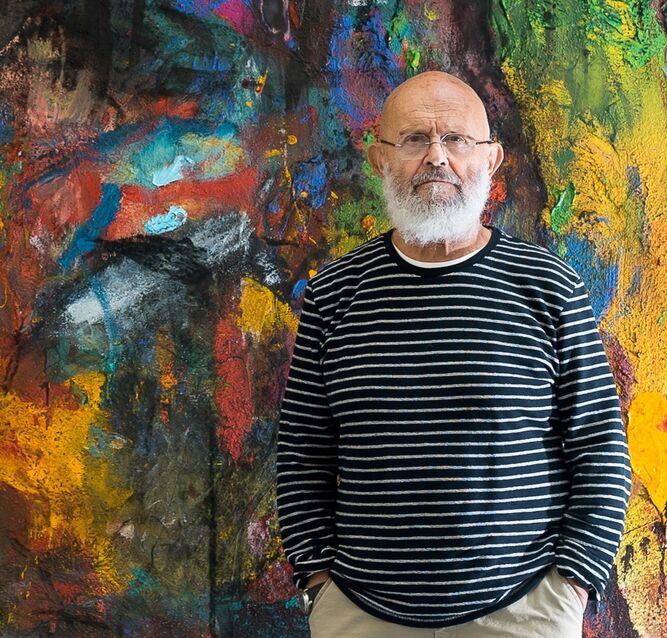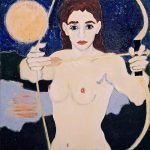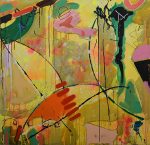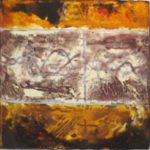
Dine is inspired by the power of simple images to be both familiar and symbolic. His repetitions of tools, bathrobes, or hearts are easily understood by the viewer, while also suggesting deeper layers of meaning. He often works with subjects and images from his childhood, giving his work both a sense of innocence and shared nostalgia. Jim Dine has created a vocabulary out of subjects that have a child-like appeal, such as tools, birds, and hearts. These personally nostalgic symbols are also commonplace and universal, creating work that is both autobiographical and open to interpretation. Dine was also instrumental in the first “Happenings,” a progenitor of Performance art. These Happenings challenged the seriousness and elitism of Abstract Expressionism, de-emphasizing the art object in favor of a performative, interactive, process. Over his career, Dine has both questioned the status of the artwork and continued a tradition of making work full of symbolism and allegory.
Jim Dine studied at the University of Cincinnati and the Boston Museum School, and received his B.F.A. from Ohio University, Athens, where he was also enrolled in the graduate program. Dine moved to New York City in 1958, where he had his first group (1959) and solo (1960) exhibitions. He instantly became an active figure in the New York art world, creating and staging many of the first “Happenings” along with artists Claes Oldenburg and Robert Whitman. Since his first solo exhibition in 1960, Dine’s paintings, sculptures, photography, and prints have been the subject of nearly 300 solo exhibitions worldwide. In 2008, Dine became the first contemporary artist invited to exhibit at the J. Paul Getty Museum.
Dine’s work is held in more than 70 important public collections worldwide, including the Albright- Knox Art Gallery, Buffalo; The Art Institute of Chicago; The Cleveland Museum of Art; Hakone Open-Air Museum, Hakone-machi, Japan; Hirshhorn Museum and Sculpture Garden, Smithsonian Institution, Washington, D.C.; The Israel Museum, Jerusalem; The Metropolitan Museum of Art, New York; Moderna Museet, Stockholm; Musée national d’art moderne, Centre Pompidou, Paris; Museum of Fine Arts, Boston; The Museum of Modern Art, New York; National Gallery of Art, Washington, D.C.; San Francisco Museum of Modern Art; Solomon R. Guggenheim Museum, New York; Stedelijk Museum; Amsterdam; Tate Gallery; London; Walker Art Center, Minneapolis; and Whitney Museum of American Art, New York.






